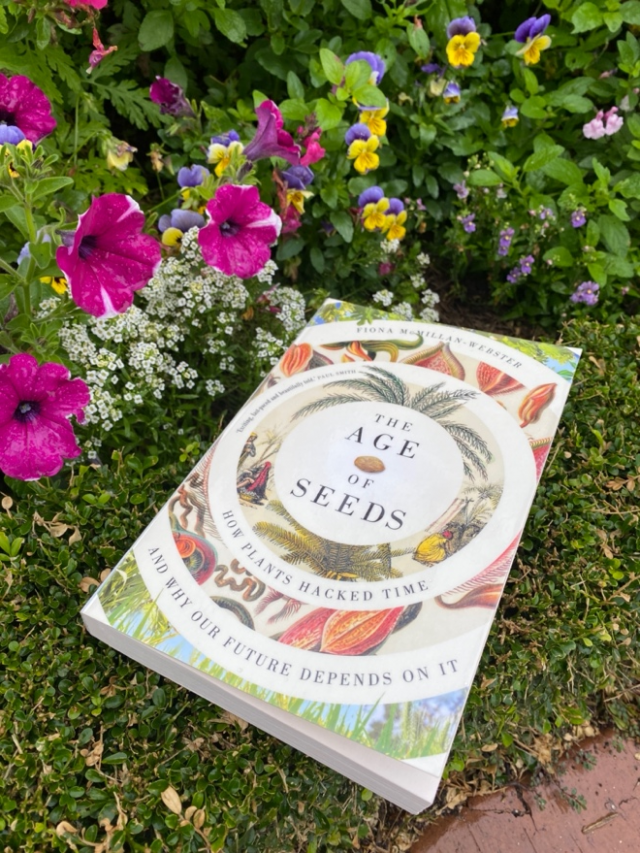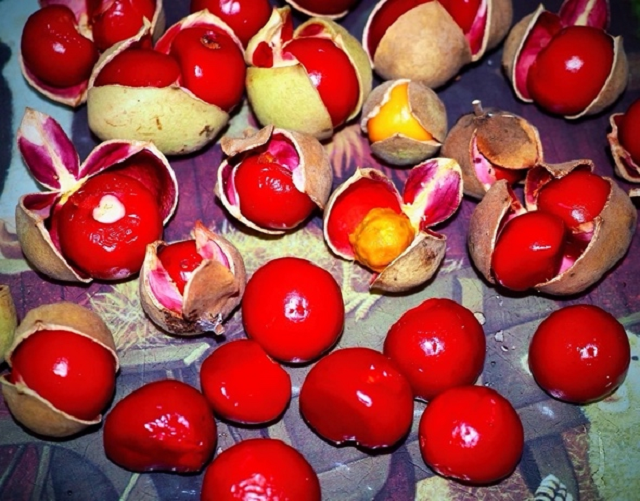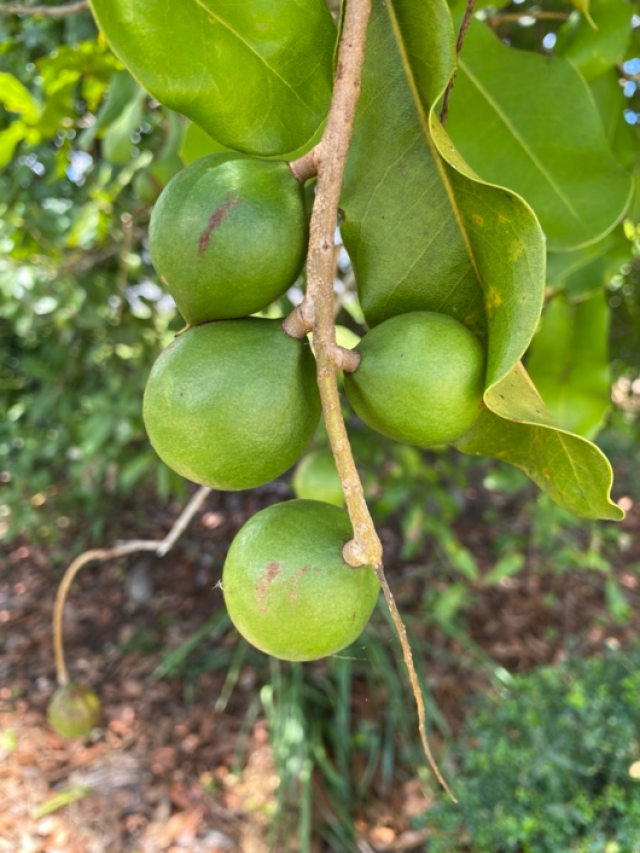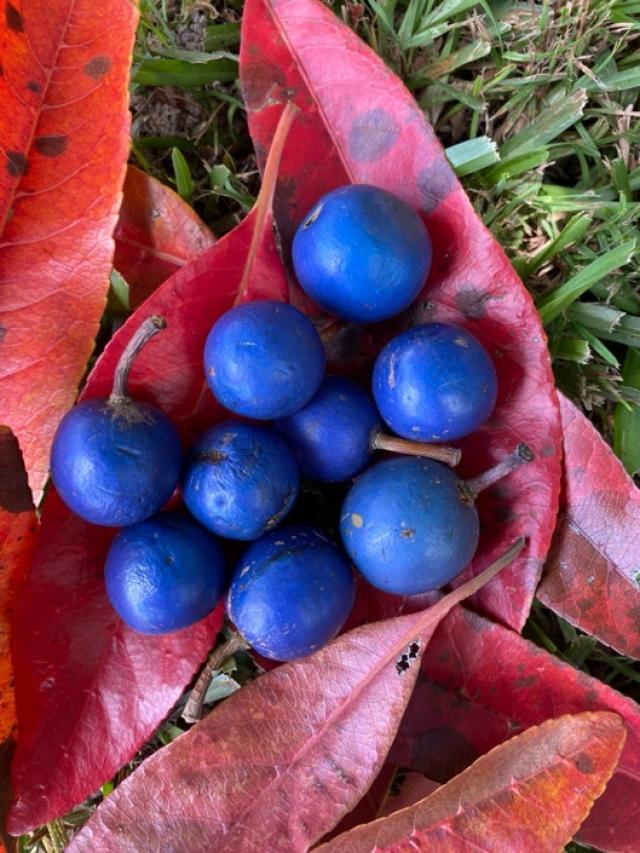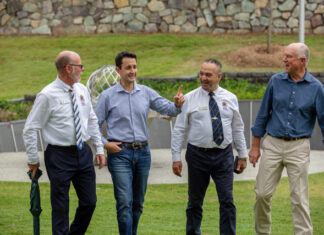The Age of Seeds is a spirited jaunt through the botany, history and adventures of seeds.
Author Fiona McMillan-Webster is a Brisbane-based science writer and her book is available at Gympie Regional Library as well as for purchase online.
To whet your appetite, we’re retelling some of the stories from the book. It’s worth reading, partly because its style is enjoyable and especially because each chapter will have plant-lovers saying “wow”.
McMillan-Webster says, “Take any one seed and you will hold in your hand the product of millions of years of evolution and, for a crop seed, the additional effects of thousands of years of human intervention.” Awesome and exhilarating stuff.
Quotes are from The Age of Seeds.
The sub-title is “How Plants Hacked Time and Why Our Future Depends on It” and it starts with the astonishing story of ancient seeds being coaxed to sprout.
Found during archaeological work at Masada, “dates and date seeds were meticulously catalogued, transported and stored” 40 years ago. By the time seed specialist, “Sarah Sallon was sent them in 2005, they’d been sitting in room-temperature storage for four decades”.
They sprouted and grew, and were found to be the extinct Judean Palm. Sarah got some male palms to sprout and then later, with more seeds from a different site, a female. This was vital because Judean palms need male and female plants to set fruit.
The boy was called Methuselah and the girl Hannah, reflecting their Hebrew origins.
The 2000-year-old seeds had survived. Ancient Lotus seeds found in a former lake bed were also successfully sprouted.
“The hard casings were filed to allow water to penetrate, and then the seeds were gently soaked. Three of them germinated. One by one, the seed casings split open to reveal a nascent shoot, a slender, hopeful thing seeking the light. Then, one by one, they were incinerated – radiocarbon dating was still a voracious process. But it produced results. The oldest seed was estimated to be 1288, give or take 271 years, old.”
Seeds are described in delightful detail in this book: “a baby plant in a box with its lunch”. The science of what goes on in a seed is explored and some of their behaviours explained.
One of the stories is about pink flannel flowers in the Blue Mountains. The 2019 fires had destroyed vegetation on Narrow Neck but these flowers appeared as the bush regenerated.
Their seeds had waited since the last fire 64 years previously in 1957. The point is that fire was needed to stimulate the seeds but it wasn’t enough to make them germinate. They needed cool weather and water, and in 2019, La Nina rains came.
Seed dispersal is another fascinating topic. Some seeds are dispersed horizontally, across the land by shattering, wind, water and critters, and some a dispersed vertically – taken deeper into the soil by earthworms for example. McMillan-Webster makes the fabulous point that seeds are also dispersed through time, saving themselves for future seasons and conditions. Not all seed eaters are good dispersers by the way. If the seed is digested, its finished. Keystone species are species upon which the ecosystem depends. In the case of seeds, keystone animal or bird species are vital for specialised seed dispersal.
The role of keystone species such as Cassowaries and Orangutans is explored. Domestication of seeds accounts for crops such as rice, wheat, maize, beans, squash, pumpkin, potatoes, sweet potatoes, chillies and tomatoes, and more.
“Cultivation of wild species is the starting point, while the process of domestication involves selective pressures exerted by humans that ultimately cause crop species to accrue different traits and become distinct from their wild ancestors. Along the way, many of these new plant species become dependent on humans for survival”.
Many cereal crops would have shattered in order to spread their seeds away from the parent. Humans have bred staple crops to do the opposite. We don’t want them shattering and scattering during harvest. The ominous thing is that, for these crops, humans are now the only means of dispersal. Domesticated seeds have usually lost the ability to delay germination too.
McMillan-Webster’s chapters on seed banks reveal the complexity of storing seeds long-term. Not all seeds can be frozen, and there is a lot of variety when it comes to how long a seed stays alive. The experiments about seed longevity described in chapter 14 reveal the tenacity of some scientists.
Svalbard in Norway’s far frozen north is perhaps the most famous seed vault, storing crop seeds in the awful event of a global political or geographical catastrophe. Many nations have seed banks, about 1750 of them in fact, for their own collections but they are not safe from earthquakes, typhoons, flooding or conflict.
The first ever withdrawal from Svalbard was by ICARDA (International Center for Agricultural Research in the Dry Areas) which had lost its seeds during the wars in the Middle East in the last 20 years. ICARDA has planted up to 33,000 seeds in order to safeguard their seed stocks. These have to germinate, grow and mature so their seeds can be collected. The domestic seeds are precious. These plants have been bred to be useful to humans.
McMillan-Webster uses grass pea as an example. Unlike many domestic crops, grass pea is “high yielding, full of nutrients, protein and fibre, drought-tolerant, flood-tolerant, doesn’t mind high salinity; most pests hate it. …. Unfortunately it contains high levels of a neurotoxin … which causes paralysis”.
The seeds that ICARDA is saving have been bred to be safe to eat. McMillan-Webster makes the point that seeds in the seed banks are precious. Seed banks have to have enough seeds to guarantee genetic diversity. It is not enough to store seeds in a seed vault; seeds that have short life spans must be taken out, grown and the new seeds collected in a never-ending cycle.

